Pentasa Mesalazine 1G Enema
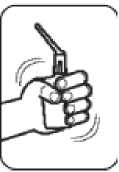
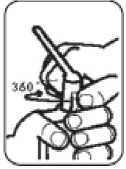

3. Put your hand in one of the plastic disposal bags provided in the pack.
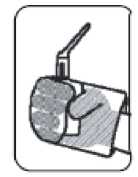
4. Hold the container as shown in the picture.
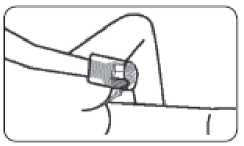

Patient Information Leaflet Pentasa® Mesalazine 1g Enema
(mesalazine)
Read all of this leaflet carefully before you start taking this medicine.
• Keep this leaflet. You may need to read it again
• If you have any further questions, ask your doctor or pharmacist.
• This medicine has been prescribed for you. Do not pass it on to others.
It may harm them, even if their symptoms are the same as yours.
• If any of the side effects gets serious, or if you notice any side effects not listed in this leaflet, please tell your doctor or pharmacist.
The name of your medicine is Pentasa Mesalazine 1g Enema, but will be referred to as Pentasa throughout the remainder of the leaflet.
In this leaflet
1. What Pentasa is and what it is used for
2. Before you use Pentasa
3. How to use Pentasa
4. Possible side effects
5. How to store Pentasa
6. Further Information
1. What Pentasa is and what it is used for
The name of this medicine is Pentasa Mesalazine Enema in the form of a suspension. Each bottle contains mesalazine 1g in 100ml of liquid as the active ingredient. Mesalazine belongs to a group of medicines called salicylates. Pentasa is used to treat inflammation in the gut caused by conditions such as active ulcerative colitis where it is affecting the last part of the colon and rectum (back passage). The enema releases the active ingredient which then acts locally to reduce the inflammation and help relieve or stop the pain.
2. Before you use Pentasa Do Not use Pentasa if you:
• are allergic to mesalazine or any of the other ingredients in Pentasa.
• are allergic to any other salicylates e.g. aspirin
• have severe liver or kidney problems
Pentasa is not suitable for use in children
Take special care with Pentasa
You should consult your doctor before using these enemas if:
• you currently have, or have previously had liver or kidney disease
• you are on any medication that may affect kidney function e.g. azathioprine
• you have ever had an allergy to a medication called Sulphasalazine
If you suffer from kidney problems you will require regular check ups by your doctors.
If you experience any unexplained bleeding, bruising, skin rashes, fever or sore throat while using this medicine, stop using this medicine and seek medical advice as soon as possible.
If you experience any chest pain, an increased heartbeat and excess tiredness whilst using this medicine, stop using this medicine and seek medical help as soon as possible.
You should make sure that you don't become dehydrated, while you are using this medicine. This can occur after severe or prolonged attacks of vomiting and/or diarrhoea, high fever or heavy sweating. If this dose occur, you should speak to a doctor or pharmacist for advice as soon as possible.
Using with other medicines
Please tell your doctor or pharmacist if you are taking or have recently taken any other medicines, including medicines obtained without a prescription. This is especially important if you are taking any of the following:
• Non-steroidal anti-inflammatories (NSAIDS)
• Azathioprine or 6-mercaptopurine
Pregnancy and Breastfeeding
If you are pregnant, planning to become pregnant or are breastfeeding you should speak to your doctor or pharmacist before taking this medicine, as they will need to decide if this medicine is suitable for you.
3. How to use Pentasa
Always use Pentasa exactly as your doctor has told you. You should check with your doctor or pharmacist if you are not sure. The enema should be used in the back passage (rectum) only.
Usually your doctor will ask you to use one enema at bedtime.
How to use the enema
1. Immediately before use, take the enema bottle out of the foil pack and shake it well 2. To break the seal twist the nozzle clockwise one full turn (the nozzle should then be in the same direction as before turning)
5. To administer the enema lie on your left side with the left leg straight and the right leg bent forward for balance. Carefully insert the applicator tip into the rectum. Maintain sufficient steady hand pressure while dispersing the bottle content should be applied within max 30-40 seconds.
6. Once the bottle is empty, withdraw the tip with the bottle still compressed
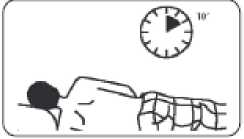
7. The enema should be retained in the bowel. Remain relaxed in the administration position for 5-10 minutes or until the urge to pass the enema has disappeared.
8. Roll the plastic disposal bag over the empty bottle Discard it and wash your hands.
Please note: Pentasa Mesalazine may cause permanent staining on contact with clothing or fabrics.
If you use more Pentasa than you should
If you accidentally use too much, you should go to your nearest emergency department or contact your doctor immediately. Take the carton with you.
If you forget to use Pentasa
If you forget to use a dose, use the next dose in the morning if it is convenient. Otherwise, use one as usual the next night. Do not use a double dose to make up for the forgotten one.
If you have any further questions on the use of this product, ask your doctor or pharmacist.
4. Possible side effects
Like all medicines, Pentasa can cause side effects, although not everyone gets them.
Following rectal administration local reactions such as itching, rectal
discomfort and urge may occur.
STOP taking Pentasa if you notice:
• Itching, skin rashes, swelling of the face, lips or throat, difficulty in breathing or wheeziness (signs of an allergic reaction).
• Unexplained bleeding, bruising, skin rashes, fever or sore throat (signs of blood disorder).
• Change in colour or amount of urine produced (signs of kidney problems).
• Chest pain, an increased heartbeat or excess tiredness (signs of heart problems).
If you experience any of the above side effects, you should contact your
doctor or go to the nearest hospital emergency department immediately.
Common side effects (affecting less than 1 in 10 patients) include:
|
• vomiting |
• headache |
|
• nausea |
• stomach pain |
|
• rash with or without itching |
• diarrhoea |
PP3/1056/V3
Rare side effects (affecting less than 1 in 1,000 patients) include:
|
• blood disorders (e.g. low levels of red blood cells) |
• lupus erythematosis (an auto-immune disorder effecting the skin) |
|
• tingling or numbness in the hands and feet |
• allergic lung reactions (including breathing problems) |
|
• inflammation of the heart or area surrounding the heart |
• changes in kidney function or kidney failure |
|
• inflammation of the liver and liver failure |
• inflammation of the pancreas |
Very rare side effects (affecting less than 1 in 10,000 patients) include:
|
• raised liver enzymes |
• muscle pain |
|
• Hair loss (reversible) |
• fever |
|
• joint pain |
• skin rash or blisters e.g. Erythema Multiforme or Steven-Johnson syndrome |
|
• allergic reactions |
If any of these side effects become severe or if you experience any other side effects not listed you should contact your doctor or pharmacist as soon as possible.
Reporting of side effects
If you get any side effects, talk to your doctor, pharmacist or nurse. This includes any possible side effects not listed in this leaflet. You can also report side effects directly via the Yellow Card Scheme at: www.mhra.gov.uk/yellowcard.
By reporting side effects, you can help provide more information on the safety of this medicine.
5. How to store Pentasa
Do not store above 25°C. Store in the original container. Keep the foiled packed bottles in the outer carton to protect them from light.
Do not use past the expiry date on the packaging.
If you are unsure about the storage, ask your pharmacist. It is best to return all old and unused medication to your pharmacist for safe disposal.
6. Further Information
Pentasa Mesalazine Enema is a colourless to faint yellow suspension presented in a polythene bottle.
Each bottle contains 1 gram of the active ingredient mesalazine (also known as 5-aminosalicylic acid or 5-ASA) in 100ml of liquid. The mesalazine settles out as a separate layer.
Also contains: disodium edetate dihydrate, sodium metabisulphite, sodium acetate trihydrate, purified water, nitrogen, hydrochloric acid concentrated to adjust the acidity of the product to a level which is suitable for administration.
Pentasa Mesalazine Enema are available in packs of 7 individually foil wrapped enema bottles and 7 polythene bags for disposal of the empty enema bottle after use.
POM
PL 20774/1056 Pentasa Mesalazine Enema
Manufactured by FERRING PORTUGUESA - PRODUCTOS FARMACEUTICOS, Sociedade Unipessoal, LDA. Rua Alexandre Herculano, Edificio 1 - Piso 6, 2795-240 Linda - a - Velha, Portugal. Procured from within the EU. Product Licence Holder: Quadrant Pharmaceuticals Ltd, Lynstock House, Lynstock Way, Lostock, Bolton, BL6 4SA. Repackaged by Maxearn Ltd, Bolton, BL6 4SA.
Leaflet revision date: 11th December 2013
Pentasa is a registered trademark of Ferring A/S.